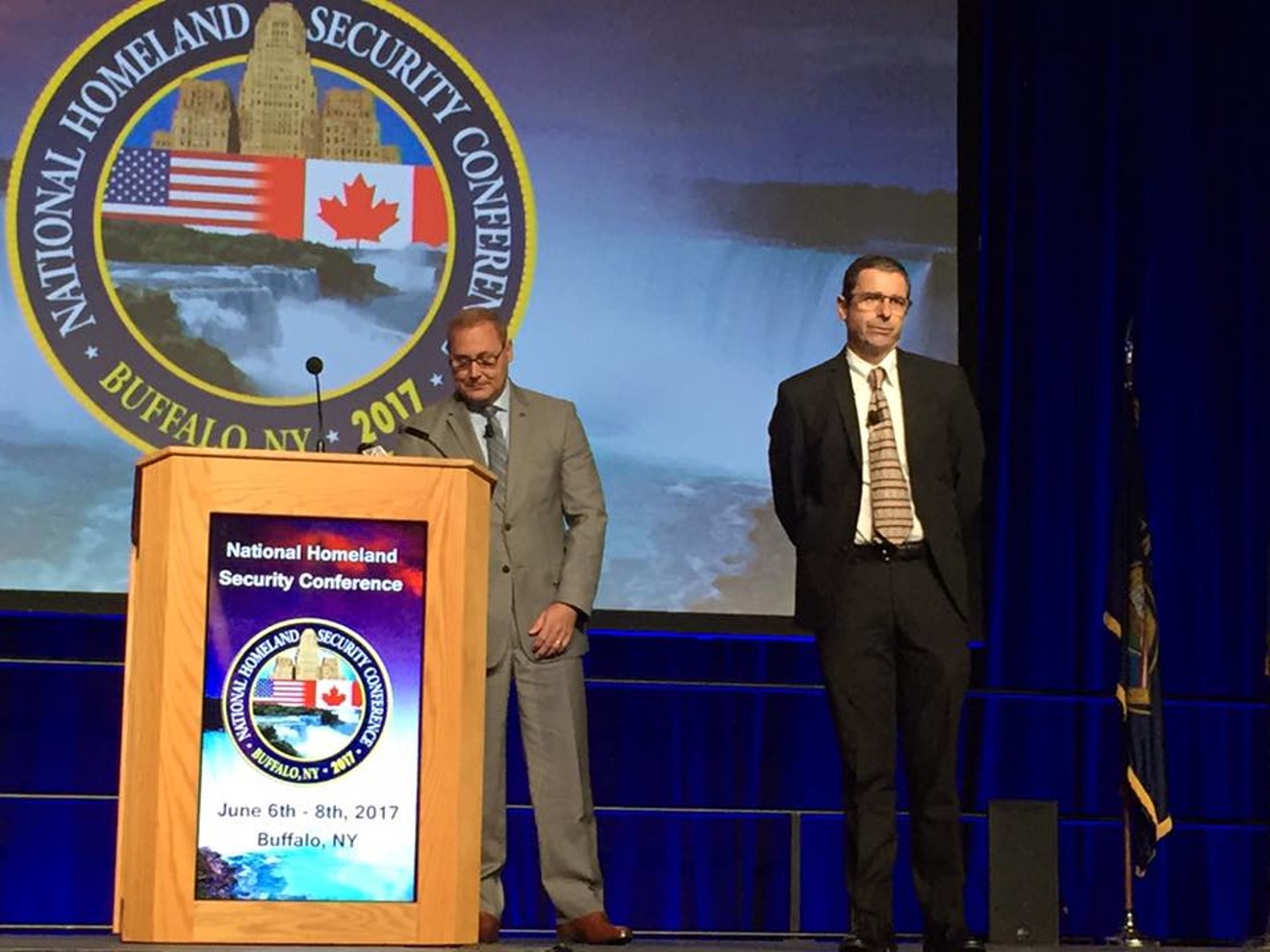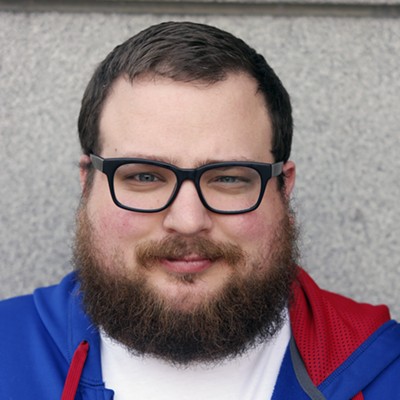During the conference's opening general session, interim Dallas Police Chief David Pughes and Dallas Fire and Rescue Chief David Coatney discussed lessons learned from the July 7 police ambush with the conference's 1,300 attendees.
The Observer followed the conference on Twitter as emergency personnel and other attendees from around the country picked up Pughes' and Coatney's hard-won lessons from last July.
First, Pughes and Coatney offered a chilling timeline of the events on the ground that night.
.@DallasPD and @DallasFireRes_q start off discussing the Dallas police ambush, lessons learned and a timeline of events. #NHSC2017 pic.twitter.com/GRKav40mRF
— Michael Walter (@MichaelMWalter) June 6, 2017
As Micah Johnson began shooting, the biggest initial concern for Dallas' police and fire departments was to establish communication and make sure the various responding departments coordinated their efforts..@dallaspd and @DallasFireRes_q show dramatic video of the shooting. Terrifying to see it from this perspective. #NHSC2017
— Michael Walter (@MichaelMWalter) June 6, 2017
"Sharing of information is critical to the success of any agency" hearing about Dallas shooting #NHSC2017 TY @DallasPD @DallasFireRes_q pic.twitter.com/7QYzC4hYbj
— Mona Curry (@monacurry) June 6, 2017
Dallas Fire Rescue Chief Coatney "in an event like the Dallas Ambush, it doesn't matter what the logo on your coat says...(1/2) #NHSC2017
— Daniel Nyquist (@djn80) June 6, 2017
Dallas EMS personnel struggled, Coatney said, because downtown Dallas was still under fire when ambulances arrived. While paramedics refused to leave until they could take wounded officers to the hospital, he said, many officers were to local hospitals in the backs of police cars, showing the importance of maintaining flexibility in chaotic situations.(2/2)..what matters is how we work together." Speaking of Dallas Fire and Police coordination in response the Dallas Ambush. #NHSC2017
— Daniel Nyquist (@djn80) June 6, 2017
On 7.7, @DallasFireRes_q paramedics pulled into hot zone. They refused to leave until they could take officers who'd been shot. #NHSC2017
— Sana Syed (@SanaSyedKI) June 6, 2017
A few of the marchers asserted their Second Amendment rights by carrying long guns, Pughes said, sowing confusion among police when the shooting started. David Brown, the Dallas police chief at the time, erroneously called Mark Hughes a person of interest after pictures circulated of him carrying his rifle during the march. Hughes handed over his gun to the first police officer he saw when shooting began.Many officers were taken to area hospitals in patrol cars by @DallasPD Use what's available to you-don't box yourself in to plans #NHSC2017 https://t.co/Z5fyrshNs3
— Sana Syed (@SanaSyedKI) June 6, 2017
Because of the size of the protest, media were already on the ground downtown, too, quickening the stream of inaccurate information about the incident, Pughes said. He stressed the need for the city of Dallas to improve communications between partner agencies, train first responders across disciplines and close gaps in emergency policies, so it is better prepared for potential crises.#NHSC2017 Chief Pughes Int. Dallas Police Chief says part of issue in identifying shooter was multiple open carry individuals at protest.
— Jona (@jona27) June 6, 2017
Dallas Ambush: Media was already on-site because of the protest. In chaos, they were reporting mistaken, inaccurate info. #nhsc2017
— Michael Walter (@MichaelMWalter) June 6, 2017
Coatney emphasized the need for different protocols for civil disturbances and active-shooter situations and for emergency medical services to have a plan to rapidly assess and extract patients from the perimeter of a chaotic emergency.Dallas Ambush: First-hand accounts may be inaccurate. In chaos, information is hard to verify. Must be careful what is reported. #NHSC2017 https://t.co/zKAFhBAXCJ
— Michael Walter (@MichaelMWalter) June 6, 2017
#NHSC2017 Chief Coatney. Areas of improvement: procedures and policies for Civil Disturbance vs Active Shooter
— Jona (@jona27) June 6, 2017
After an incident like the ambush, Pughes said, provisions must be made for the long-term mental health of survivors and police officers, including those who weren't at the scene.#NHSC2017 Chief Coatney areas of improvement: Rapid assessment by EMS to quickly extract patients from perimeter.
— Jona (@jona27) June 6, 2017
We need to remember the mental health of LE and survivors of mass casualty incidents. Survivor guilt and PTSD are all concerns #NHSC2017
— Michael Walter (@MichaelMWalter) June 6, 2017
#NHSC2017 Chief Pughes after incident be prepared to address mental health of responders. Also those not on duty they'll suffer from guilt
— Jona (@jona27) June 6, 2017












